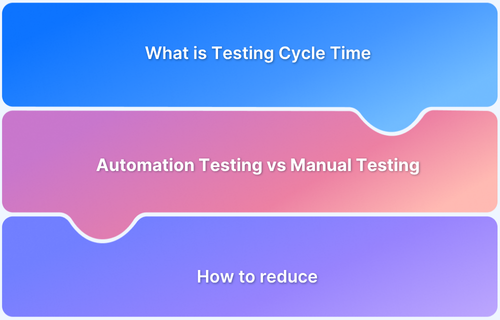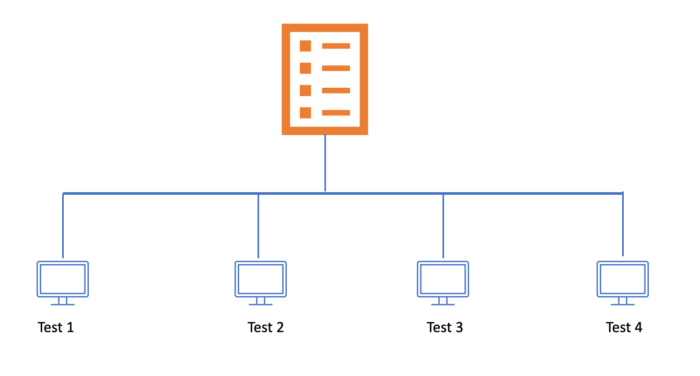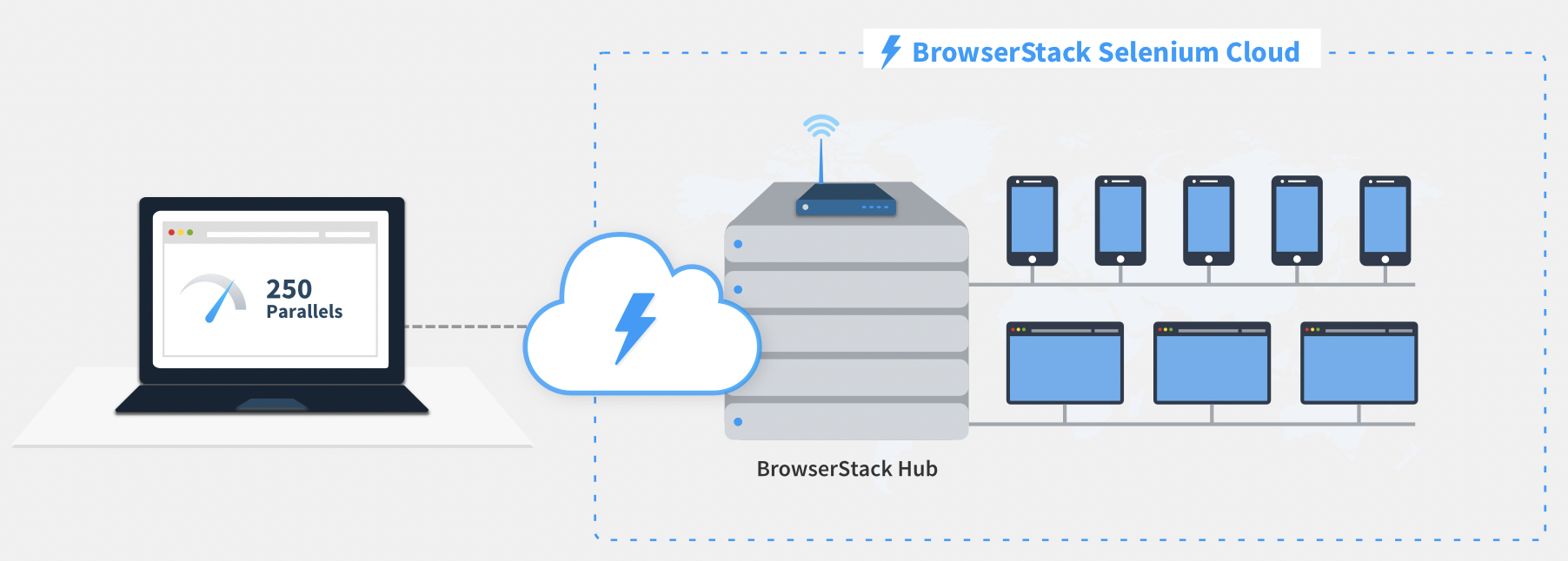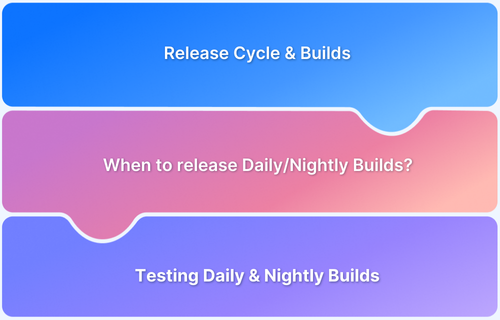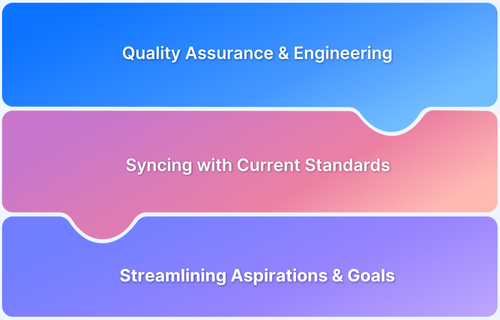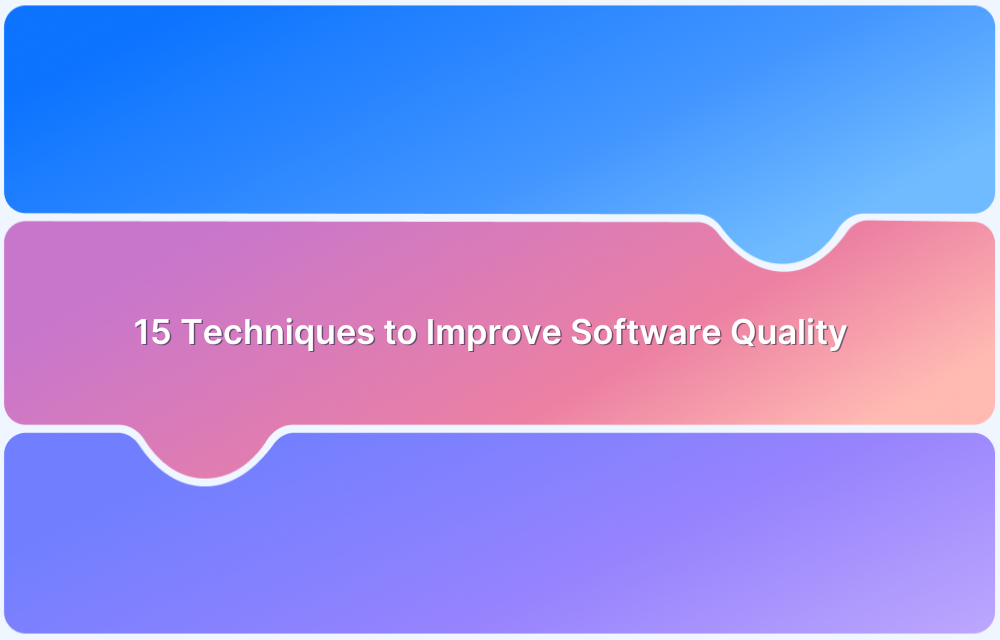Reducing testing cycle time is important for faster software product releases and staying ahead in a competitive market. Streamlining this phase can significantly cut costs, improve quality, and enhance team efficiency.
This article explores effective strategies and tools to optimize your testing process, ensuring you deliver high-quality products on schedule without compromising standards.
What is Testing Cycle Time?
Testing Cycle Time is the total time taken to complete one round of testing, from the start of test planning to the end of test execution, including any revisions or fixes. It reflects the efficiency of the testing process and impacts project timelines and product release speed.
The Need for reducing Testing Cycle Time
Due to the ever-increasing device fragmentation, a comprehensive enterprise testing strategy is a primary need for a QA team. Release timelines, too, are growing immensely shorter since users do not expect to wait around for upgrades, fixes, or new features.
The goal of any agile process is to accelerate delivery, remove bugs, and shorten the release cycle. If multiple test failures bog down organizations, their time and resources are exhausted.
- A shorter test cycle enables higher R&D productivity. Research and development efforts include modeling, trial and error, simulations, and prototyping, so reducing testing cycle time can increase the number of cycles and boost success rates.
- By reducing testing cycles, you can enable frequent builds and application releases while the app is under development. This way, you can test the builds on real devices and achieve result-driven development with quicker time-to-market spans. This helps you incorporate technological advancements into products without delay in general availability.
- Decrease the testing time in DevOps to provide better-quality apps to users through instant feedback on code regressions and error logs for further reference.
A shorter DevOps life cycle boosts efficiency without compromising on quality. Essentially, several problems related to long testing cycles can be addressed through automation.
Improving Testing Cycles: Automation Testing vs Manual Testing
Automation testing in CI CD reduces testing cycle time by running tests in batches, running regression tests without manual intervention, and launching multiple scripts at any time.
Test automation can work wonders for:
The UK supermarket chain Sainsbury used BrowserStack automation to improve the release frequency of their Groceries Online team from once a month to every two weeks.
- With Cypress integration, the team simply moved from manual to automated testing by installing the CLI and configuring test run settings for targeted regressions during releases.
- BrowserStack Live continued to help Sainsbury manually test one-off bugs and issues for older browser versions.
Ways to Reduce Testing Cycle Time
Development and testing functions are highly metric-driven. The testing speed and bug rate impact the reputation and quality of a company. Combining intelligent practices and automation tools can drastically reduce testing cycle time.
Here are a few ways to achieve this:
Automate Atomic Tests
Atomic tests don’t have more than a couple of assertions about the application test. By automating these tests, you can get faster execution. These tests are also easier to execute than complex tests with multiple functionalities.
For instance, a developer must check whether users can log into the website, change their account details, and add and verify payment methods.
- Instead of scripting a single test to validate all these functions, the smarter approach is to write separate tests for each and automate their run. This way, you can reduce run time and improve quality.
- Break down complicated and long test scripts into individual atomic tests so you can automate them to run at once and exponentially reduce testing time.
Perform Parallel Testing
Let’s say your test suite has 50 tests, each taking 1 minute. Running these in sequence will take 50 minutes, whereas running these in parallel will take 1 minute.
Parallel testing also frees up time for in-depth tests when needed. It works best for cross-browser, cross-platform compatibility tests in multiple permutations-combinations of the “Browser-OS-Device”. The more parallels a tester runs, the faster a test suite is completed in real user conditions.
With BrowserStack’s parallel testing and cloud infrastructure, GoodRx reduced test times by 90% and enabled 15 releases a day. By assisting the team in the transition from manual to automated web and mobile app testing, the test rate could be scaled from 0 to 2.7 million automated tests in one year.
Without BrowserStack’s parallelization, each tester would spend 6-7 hours on multiple pages on multiple browsers. Now, the same takes less than five minutes.
In case of failures, the BrowserStack API helps check precisely what failed and why without digging through the code.
Slack bug reporting also enabled GoodRx to receive instant notifications about failure, following which they can reproduce the bug on BrowserStack Live and fix it.
Reduce Selenium Commands
By reducing the number of Selenium commands, you can cut down on error possibilities and thus execute tests more quickly. Automate the Selenium commands for a more optimized testing time without manual hassles.
- Too many Selenium commands make the test unstable and long. It can negate all time-saving efforts of atomic and parallel tests.
- For faster-automated tests, keep Selenium commands minimum and optimize your code for more stable execution.
Try BrowserStack Selenium Testing
Choose Explicit Waits, Not Implicit Waits
Implicit waits set a default wait time between each command of a test script. Thus, the next step runs only when the defined time has elapsed. On the other hand, explicit waits execute the next script step as soon as one is complete.
Choose only explicit waits for your testing mechanism for a shorter test run time. Even though its implementation is more complicated, it will increase productivity and reduce turnaround time in the long run. Although explicit code seems verbose, use it to reduce testing time dramatically. Do not use implicit and explicit wait together, as it may lead to unpredictable behavior.
Read More: Wait Commands in Selenium C and C#
Final Thoughts
Use a combination of automation and smart workflow practices to reduce testing cycle times in an effective and future-proof way. Parallelization, command reduction, and optimized wait decisions are just the start.
To boost testing efficiency further, adopt BrowserStack’s Automate and App Automate to improve testing speed. With advanced technologies and expert insights supporting your testing strategies, the overall productivity of your DevOps workflow will further shoot up tremendously when done using a Real Device Cloud infrastructure such as BrowserStack.
